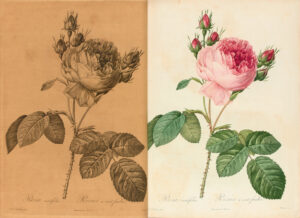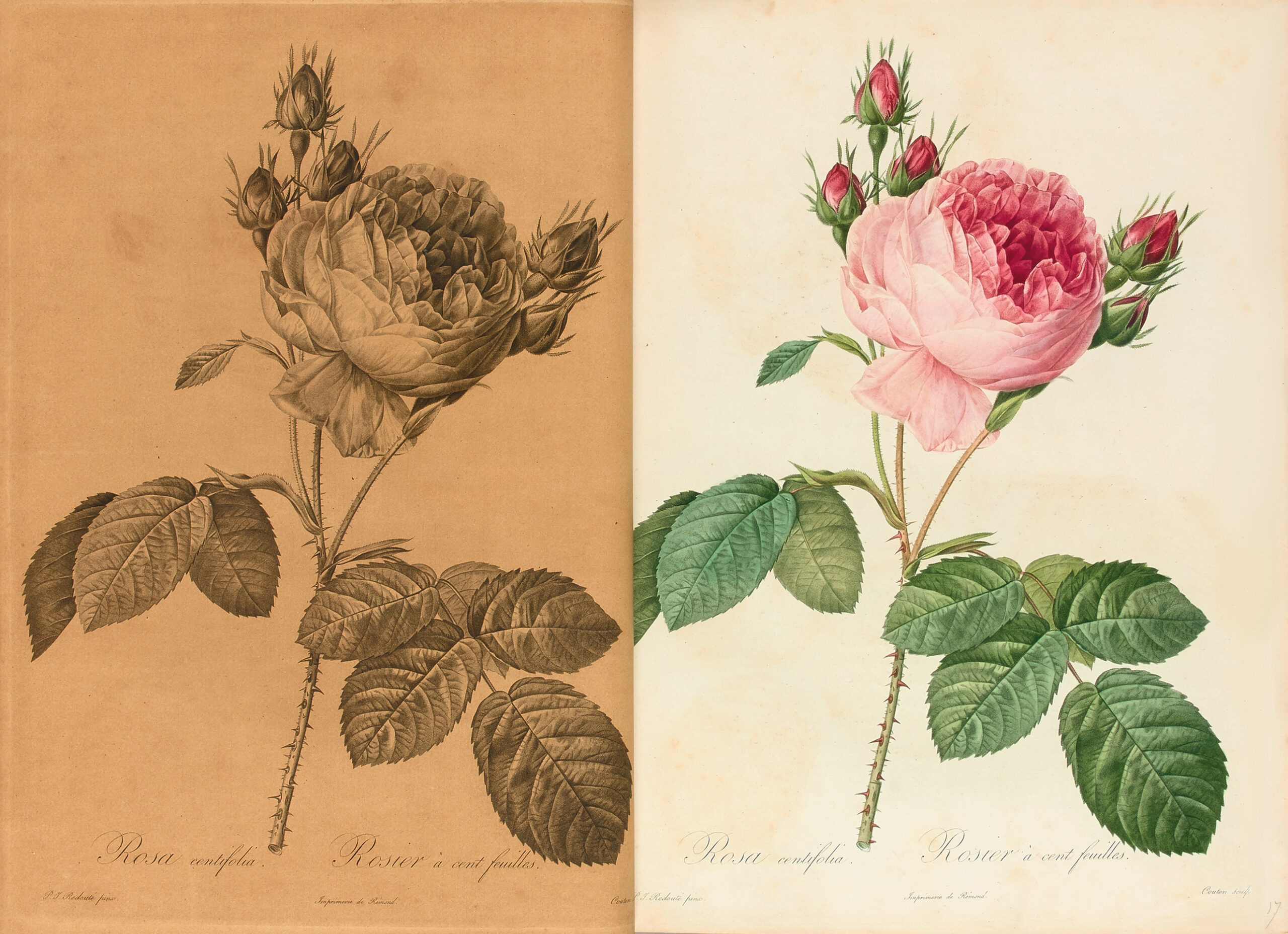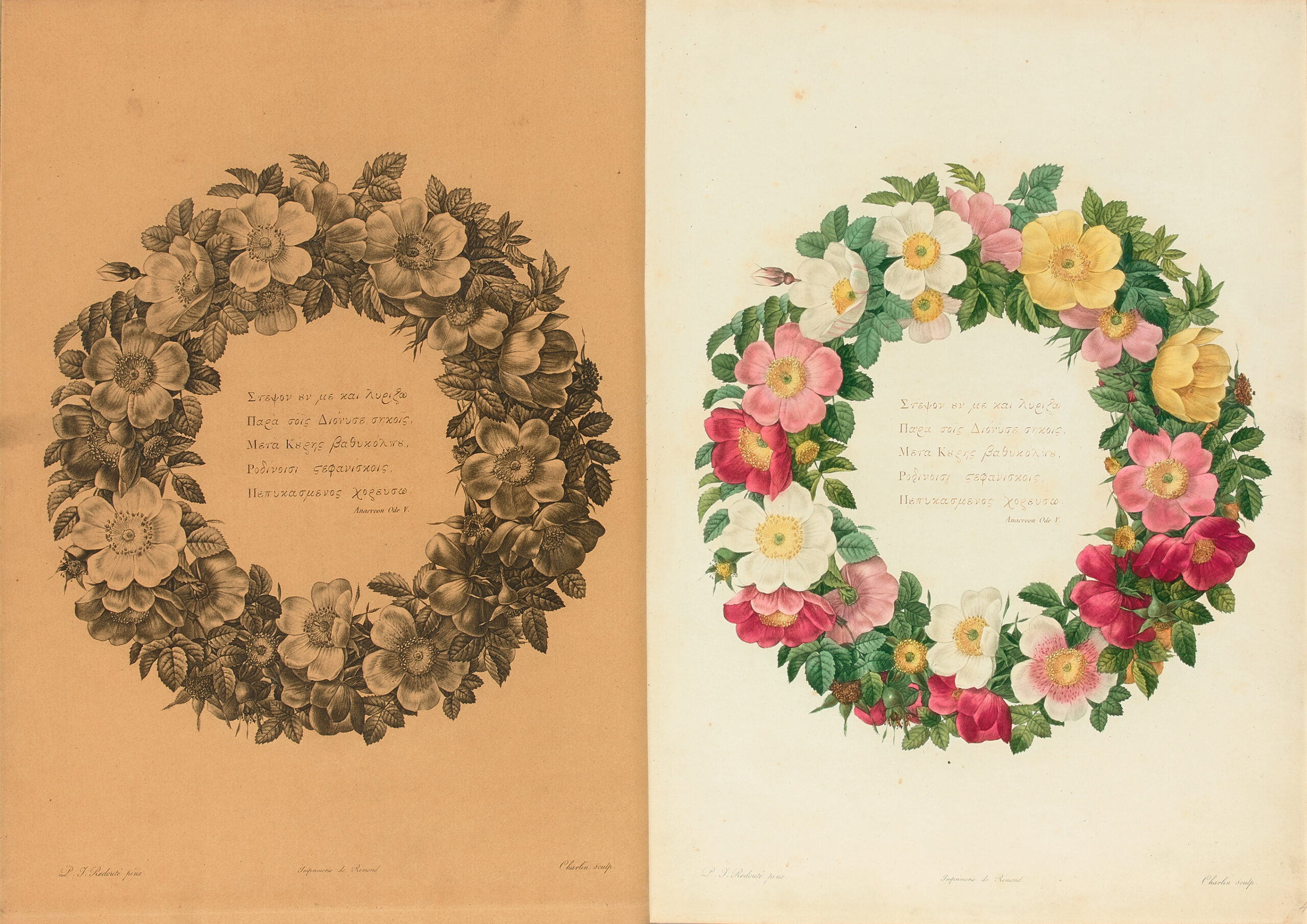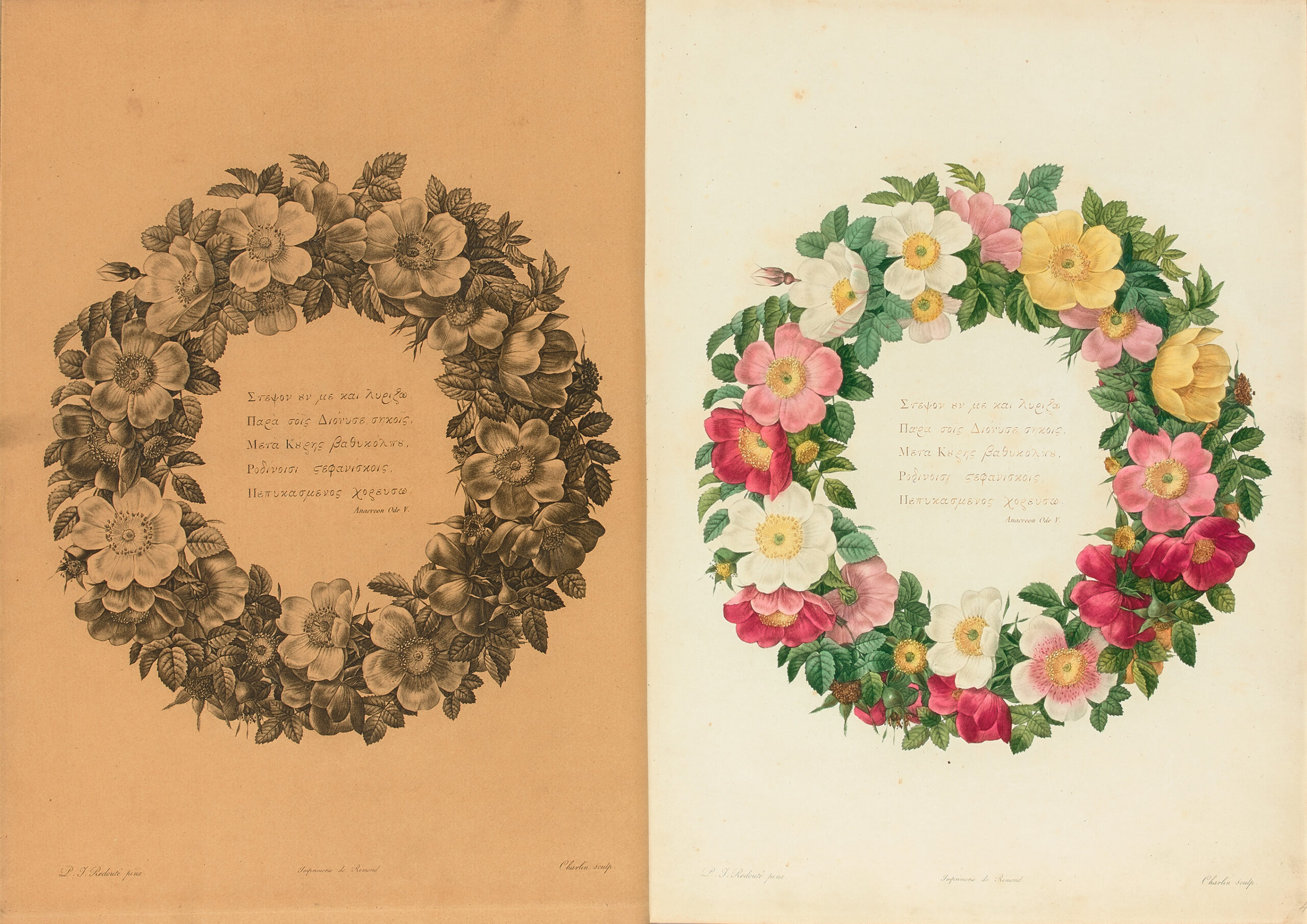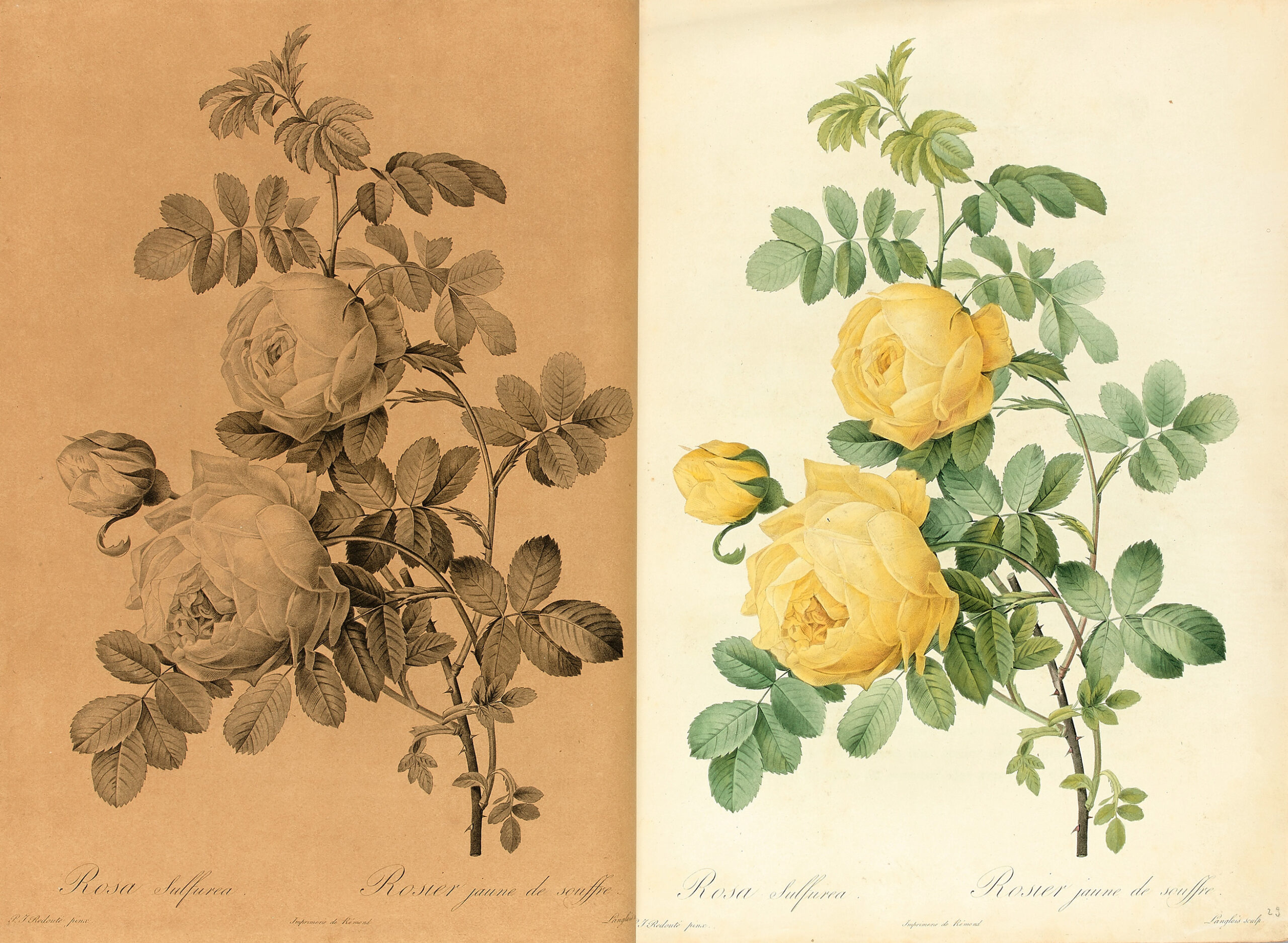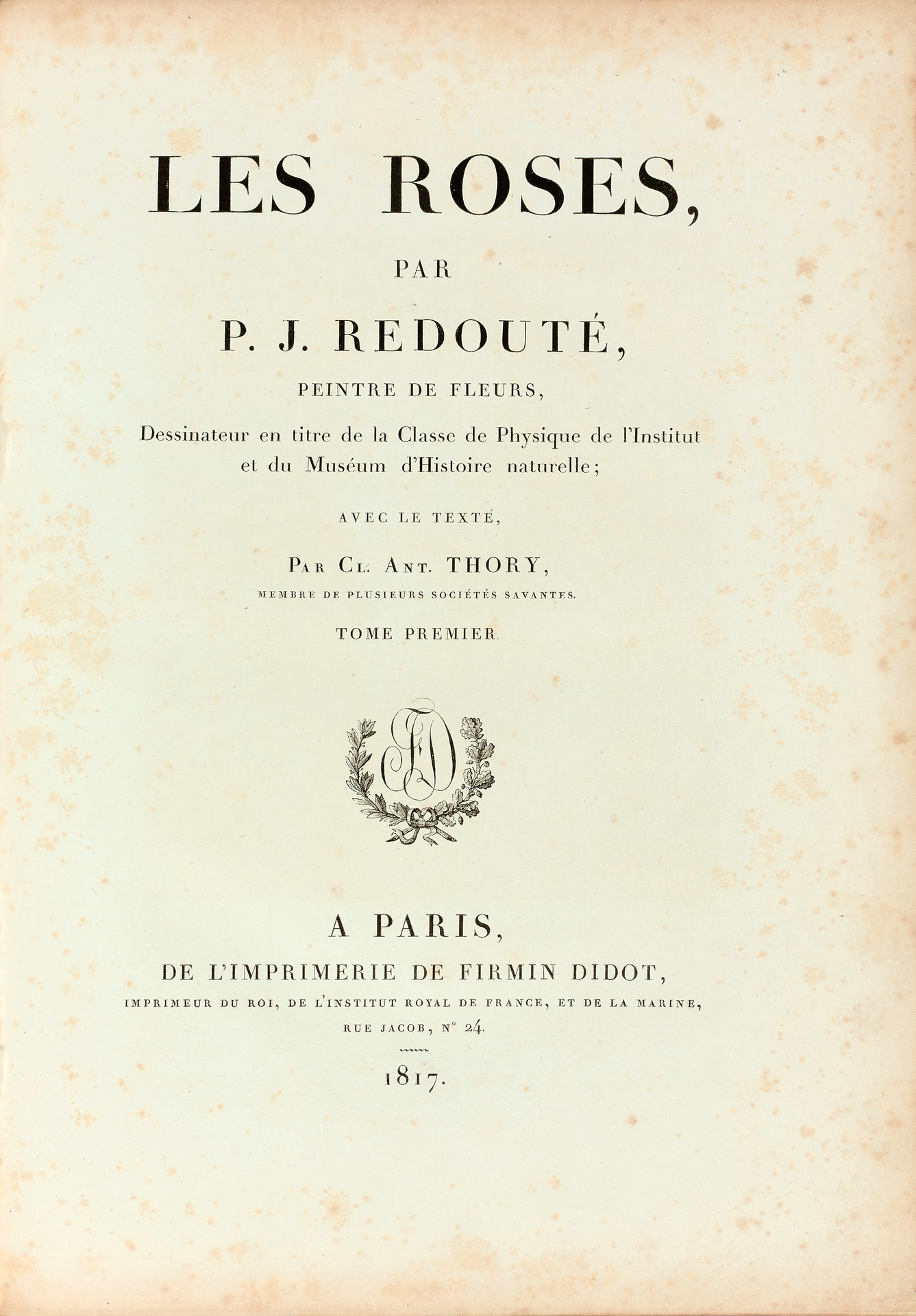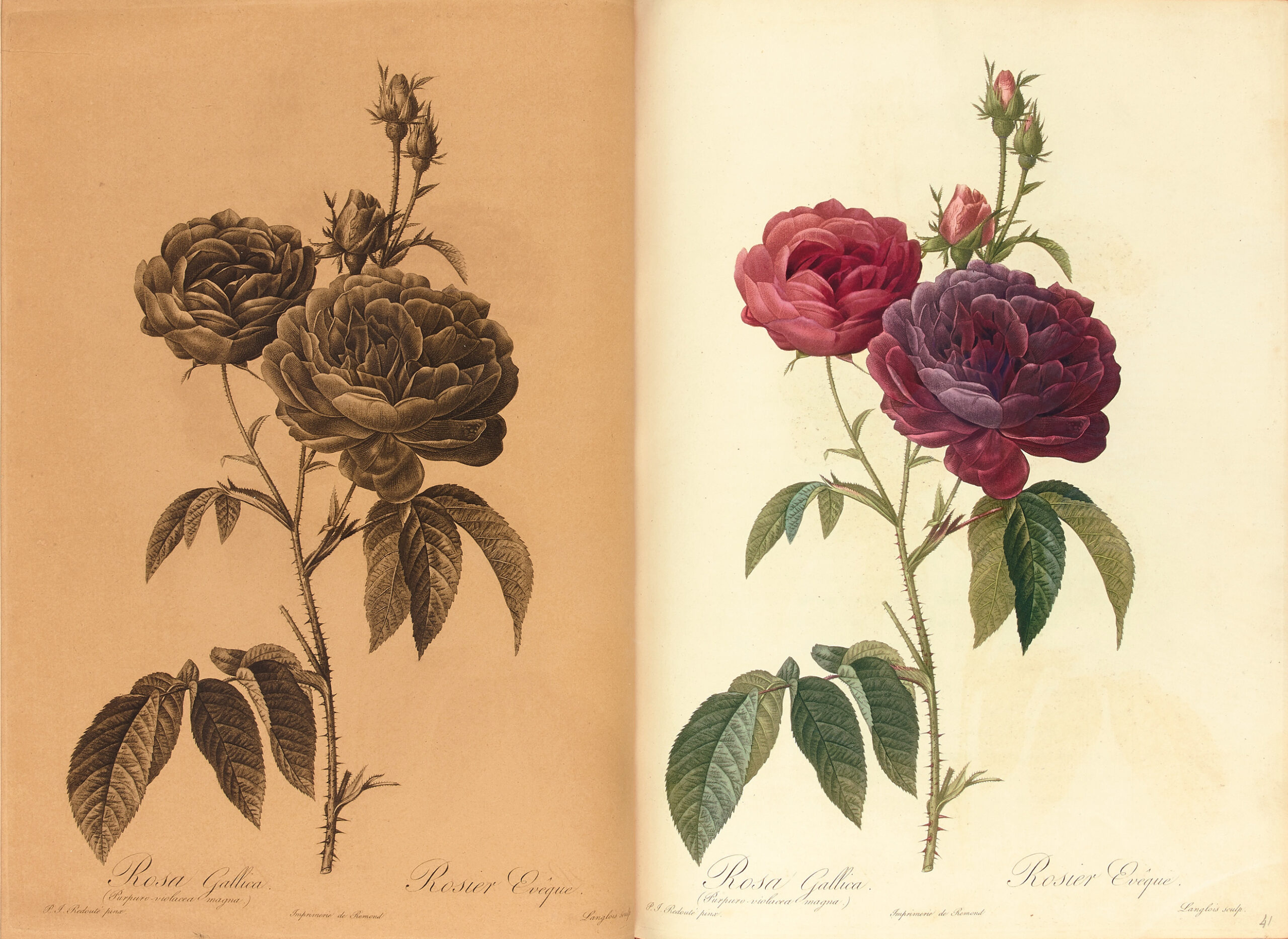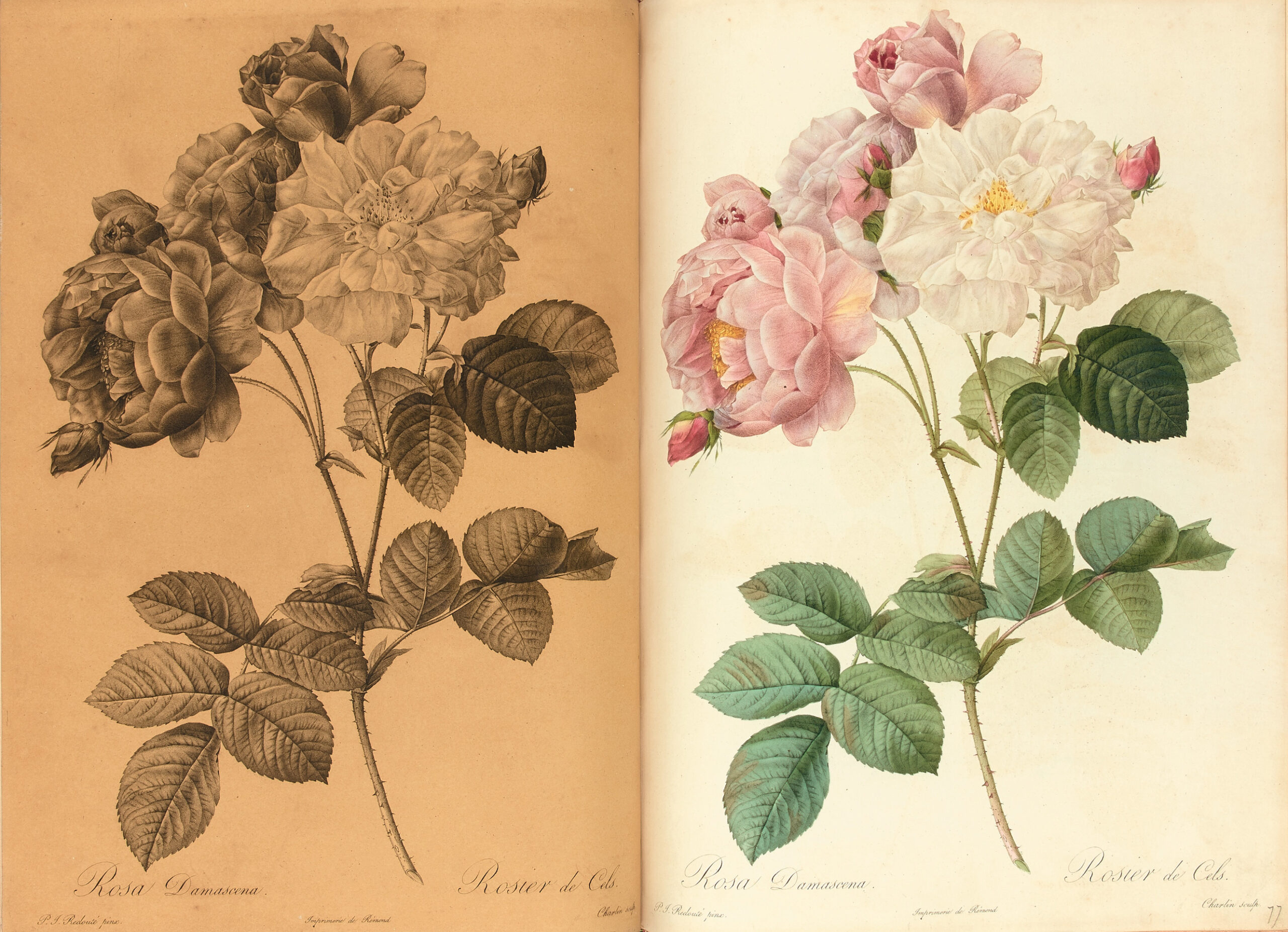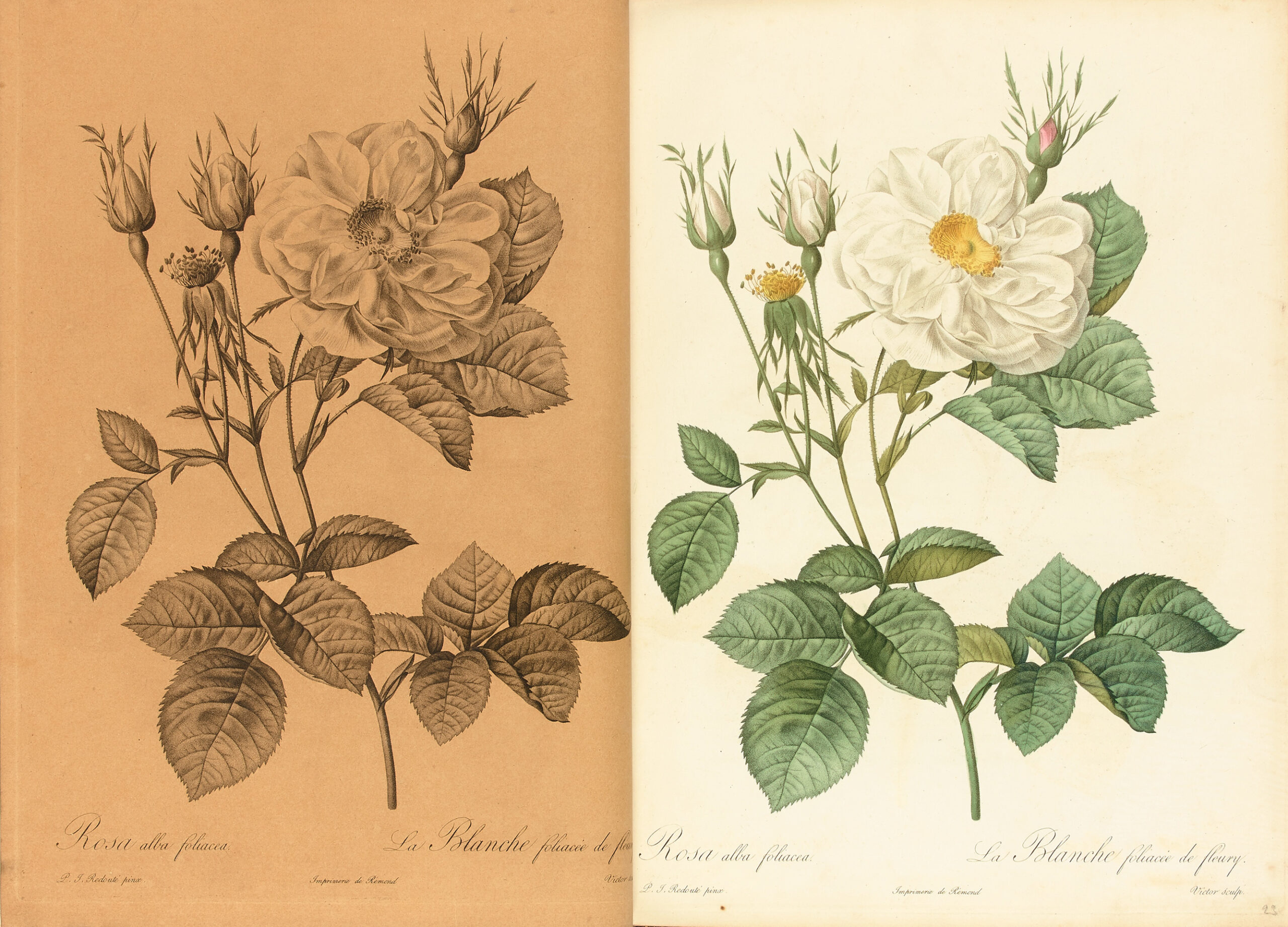Paris, de l’imprimerie de Firmin Didot, Imprimeur du Roi, 1817-1821-1824.
3 folio volumes of: I/ 156 pp., 1 portrait out-of-text, 57 engravings out-of-text in two states including 1 frontispiece, (1) table l.; II/ 122 pp., 59 engravings out-of-text in two states, (1) table l.; III/ 125 pp., 54 engravings out-of-text in two states, (1) errata p., (1) l. Light usual foxing on some text ll.
Full blue Jansenist morocco, blind-stamped fillet around the covers, later spines in green morocco, inner gilt border, gilt edges. 19th century bindings.
354 x 255 mm.
First edition of the legendary book by the one known as the “Raphael of flowers” and one of the most beautiful collections on roses. Dunthorne 232; Hunt, Redouteana 19; Nissen 1599; Pritzel 7455; Ray, French, 89 ; Stafleu TL2 9748.
It was published in thirty issues from 1817 to 1824.
One of the precious and rare copies containing the 171 engravings including 169 plates of roses in double state, one in color on vellum paper, the other in black on shiny paper, the frontispiece in two states, in color and in black on shiny paper, and the portrait, in black and on shiny paper.
This mythical work, one of the most beautiful printed books of flowers, is also the artistic reference work of which the plates were the most often reproduced in all important botanical works.
The artistic quality of Redouté’s wonderful drawings combines with an anatomical science of the flower and with a freshness of coloring still unequalled today.
In the introduction of Schutter’s edition in facsimile, Sir George Taylor notes Gisèle de La Roche’s appreciation: “Redoute and Thory knew, described and figured all the important roses known, in their day. Included were many of the key ancestors of our present day roses. The plates in “Les Roses” have artistic value, botanical and documentary value, both for species and cultivars still surviving and for those that have disappeared…”.
The illustration consists of a portrait of Redouté engraved by Pradier after Gérard, of a frontispiece decorated with a wreath of flowers, engraved by Charlin after Redouté, and of 169 plates drawn by Pierre-Joseph Redouté, stipple engraved by Bessin, Chapuy, Langlois, Victor, Lemaire, Charlin and others printed in color by Rémond.
Recognized at a young age for his talents as a flower painter, Redouté obtained in 1788 the title of Draughtsman to Marie-Antoinette’s Cabinet. Affiliated during the Revolution with the Museum of Natural History as a botanical draftsman, he abandoned the gouache used until then for the Museum’s vellums in favor of watercolour. Drawing teacher of Josephine de Beauharnais, he was appointed in 1805 “Flower painter of the Empress” and it was at Malmaison that he executed the first drawings intended for this work.
To carry out this luxurious publication, Redouté uses the stipple engraving method. Developed around 1785 by Francesco Bartolozzi, whom he had met in London, this technique, both meticulous and tedious, consists in engraving the plate with a multitude of tiny dots. The printer then applies all the inks on the plate, “à la poupée” (with the finger wrapped in a strip of fabric), before processing to the printing of the plate in a single pass. Each plate is then enhanced with watercolour and sometimes with gum Arabic.
In his foreword Redouté briefly evokes this process, which he seems unwilling to disclose, consisting “in the use of these same colors, on a single plate, by means which are particular to us, and which we offer to publish someday. This is how we managed to give our engravings all the softness and all the brilliance of watercolour”.
“Redouté’s flowers are admirable simultaneously for a perfect accuracy regarding botanical science, by the brightness of the colours and by the delicacy and lightness of the touch. It was wonderful to see the hands that created these masterpieces” (André De Voes, Biographie de P.-J. Redouté. Gand, 1873, p. 14.)
Roses are classified into three groups: wild roses, known since Antiquity, such as dog rose and evergreen roses: the roses from the Middle Ages, such as white roses and fetid roses: finally, more recent roses, created at the time of Redouté from species imported from Asia.
The presence of proofs on shiny silky paper was, above all, technical. English printers had discovered that stipple engravings printed better with worn brasses. So they printed a few proofs in black to blunt the brasses.
“Les Roses” remains a work of great delicacy and unmatched refinement of which the name remains linked to that of the artist.
“So well known that it seems almost superfluous to add any more praise after nearly a hundred and fifty years of honours” Stafleu.
The folio format of this beautiful edition fully allows the artist to express the sumptuousness and delicacy of these ancient roses that enchanted the rose gardens of Versailles or Bagatelle.
Through 170 engravings that make up as many highly refined paintings one can see relive these mossy, centifolia, gallica, alpina, multiflora, indica, rubufolia roses whose exquisite hues have been enhanced in watercolour under the vigilance of Redouté in splendid and subtle coloring, from the most delicate pink to the warmest carmine or purplish crimson.
Precious copy complete with the 170 engravings in two states, including one in sumptuous hand-coloring from the time.
In the past 25 years, only three other quality copies have appeared on the market.
And this copy, with light usual foxing but only on some text leaves, complete with the 171 engravings in two states including one in color.
